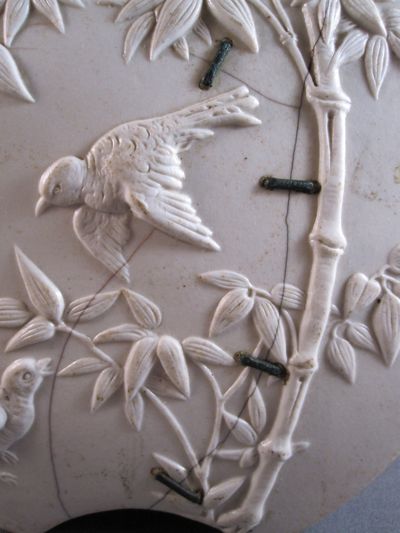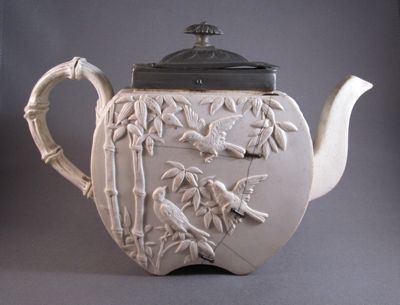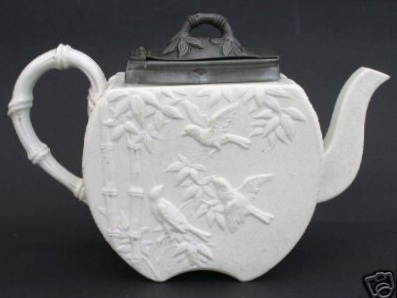This lovely teapot, made in England during the Aesthetic Movement, has a Parian finish and was made by Copeland in 1874. It measures 6 inches high and 8.5 inches from handle to spout. The original pewter lid, which looks like a replacement, is actually original to the piece. I feel that the staple repairs on this teapot enhance the design, as they follow the same graceful line of the raised bent bamboo decoration and the staples mimic the horizontal nodes along the vertical cracks.
The Copeland firm, operated by William Taylor Copeland in Staffordshire, called the parian finish “statuary porcelain” because of its resemblance to the fine white marble of neoclassical sculpture.
There are four staple repairs on each side of the teapot.
The underside of the teapot reveals an incised COPELAND mark and British registry mark in relief, dating this piece to 1874.
This “perfect” teapot is without staple repairs and has an ornate pewter lid. I still prefer my “imperfect” example with visible battle scars proudly displayed.
Photo courtesy of Teapots Teapots Teapots
Tags: English, pottery, staples/rivets





that is the most beautiful thing ever.
even more so with the repairs.
What a perfectly stunning object. The graceful line of the staples makes it all the more remarkable. Just where did you find this beauty and when?
Big Question: Does anyone have any idea exactly how those staples could have been inserted without further damaging the vessel?
Gorgeous!
Does this gorgeous vessel hold liquids? Tea perhaps? Or hot toddy?
Hi, Someone asked how the wires were inserted without further damage?
A man used to knock on peoples doors many moons ago with a bike adapted with a drill type motor attached to the chain.
This drill ed the holes either side of the crack.The wire was then heated with a blow torch and quickly inserted,then cooled quickly as to shrink and tighten the crack from becoming any bigger,it did the job!!
I have the exact teapot and are looking to sell
Could someone please let me know